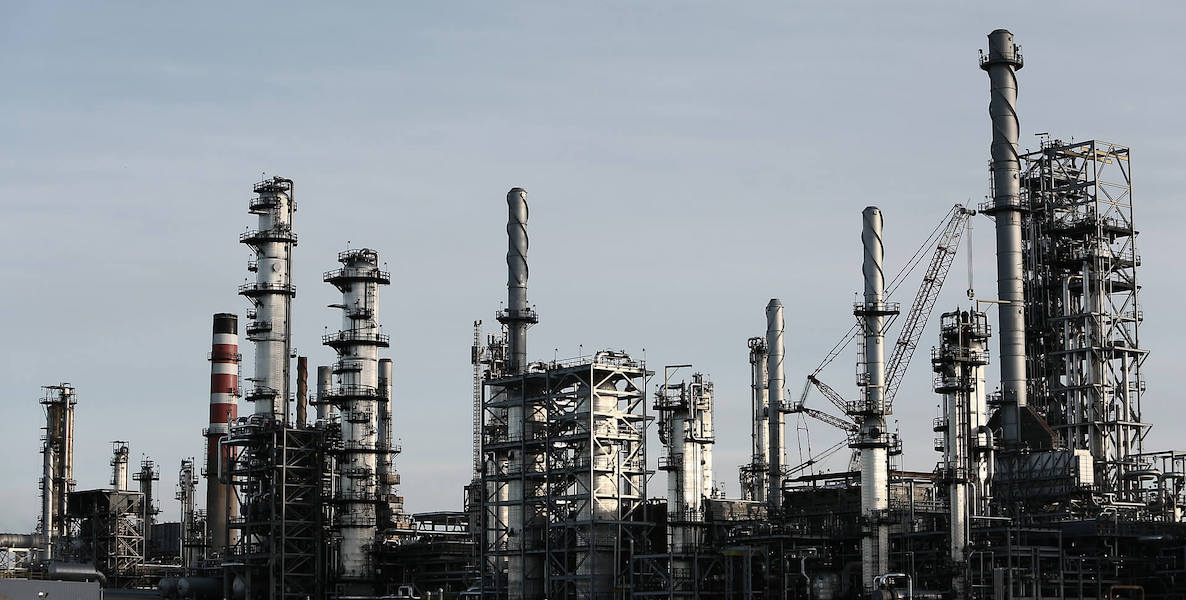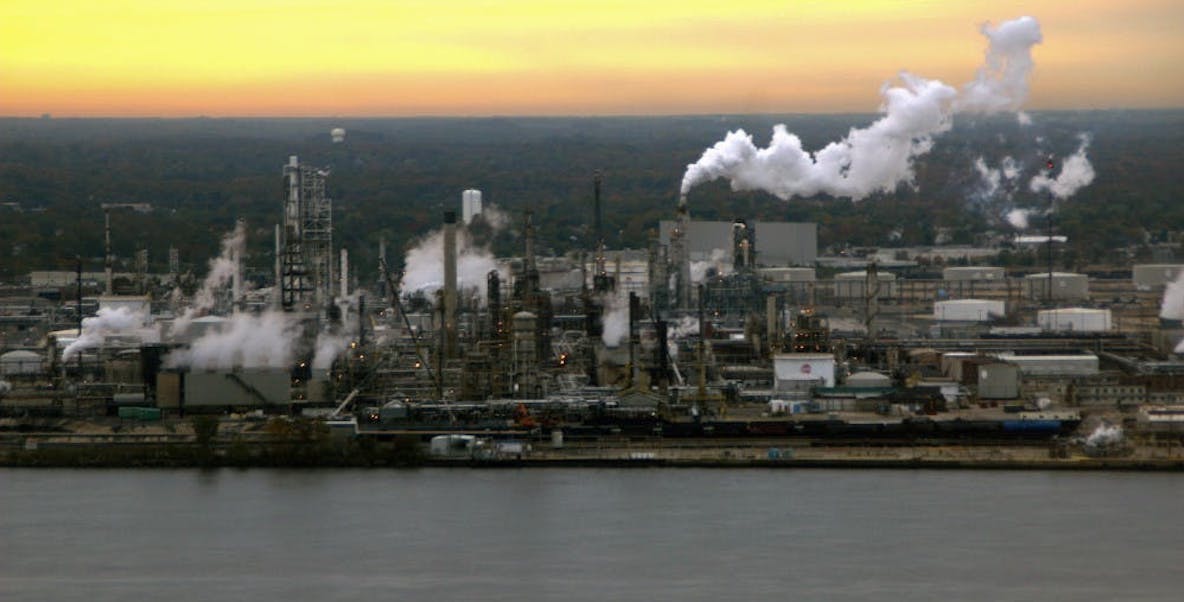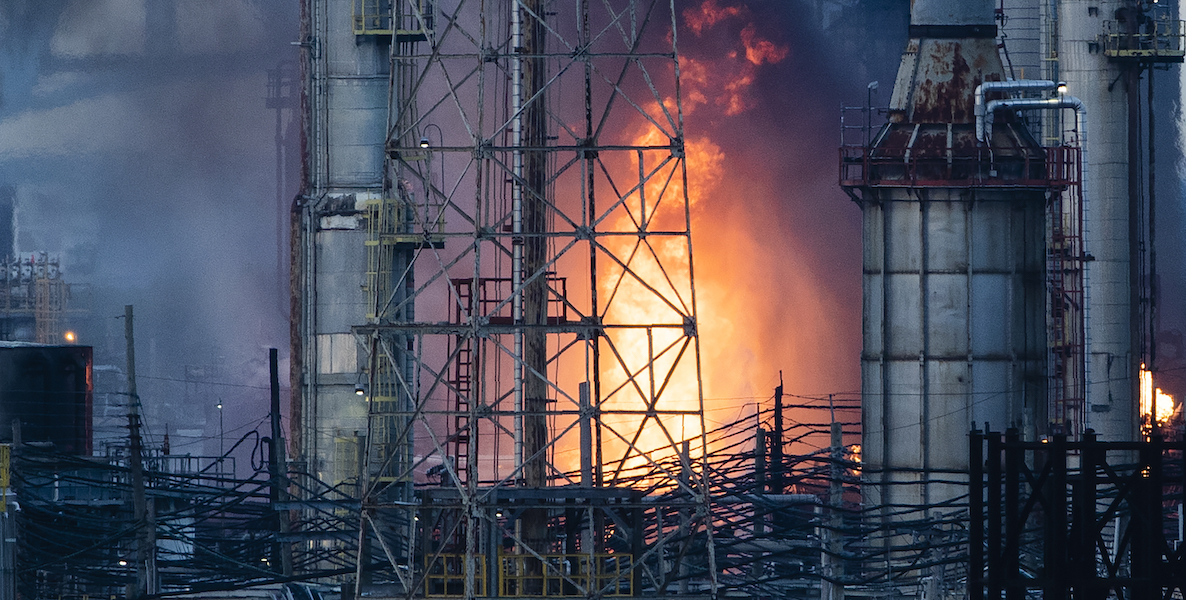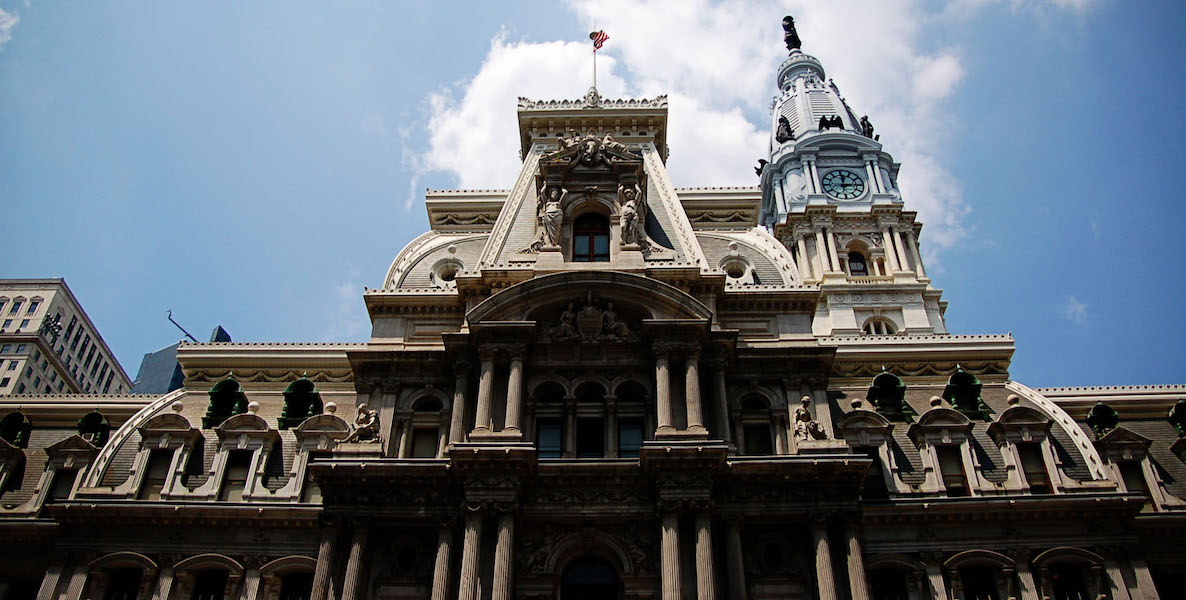The Philadelphia Energy Solutions (PES) refinery in South Philadelphia was the largest and oldest refinery complex on the East Coast until it shut down this summer, following an explosion on June 21, when a highly flammable processing liquid leaked and caught fire from a corroded elbow joint, sending a massive fireball into the Grays Ferry darkness.
This past semester, Gwen Ottinger’s Policy Analysis class in the Masters of Public Policy program at Drexel University decided to tackle the problem of PES, as a way to make our learning have a real impact on Philadelphia. As citizens of this city, we saw our neighbors in Southwest Philadelphia, Grays Ferry and Point Breeze struggling, and thought we could use this course as a way to lift them up.
That night in June, approximately 5,200 pounds of hydrofluoric acid (HF) were released, of which about half was contained by firefighting equipment. The remaining HF was released into the atmosphere. Had conditions been different that morning, or had the explosion not pushed much of the remaining HF higher into the atmosphere, Philadelphia could have experienced a mass-casualty event in the form of a low-lying cloud. HF interacts with calcium in the body, whether inhaled or absorbed through the skin, to cause cardiac arrest and death.
![]() PES filed for Chapter 11 bankruptcy for the second time following the incident. Before that, PES was Philadelphia’s largest single polluter, according to the Office of Sustainability, and local rates of respiratory illness including asthma, COPD and emphysema, were all higher than in the city as a whole.
PES filed for Chapter 11 bankruptcy for the second time following the incident. Before that, PES was Philadelphia’s largest single polluter, according to the Office of Sustainability, and local rates of respiratory illness including asthma, COPD and emphysema, were all higher than in the city as a whole.
The problem definition our class settled on was how to create a land use that benefits the community. We worked on developing goals for our policy analyses, such as improving health outcomes in the neighborhood and increasing community influence over the decision-making process. Some of us took as inspiration the rhetoric of our mayor, Jim Kenney, when he said that your zip code should not determine your educational and economic destiny. We felt we should extend that further: Your zip code should not determine your health outcomes. What we saw was a largely minority, largely working-class community that was suffering disparate health effects as a result of long-term pollution at the site. We resolved to come up with some concrete solutions to the problem.
Along the way, we heard from many stakeholders with an interest in the outcome of our research. We spoke with the Clean Air Council, local community group Philadelphia THRIVE, and city Managing Director Brian Abernathy. They challenged us to set aside old ideas and old habits of investigation, and search for the kind of solutions that would both make an immediate impact, and that could garner a broad enough consensus to be possible.
Some of the ideas we came up with in our policy analyses were also put forward by the city in their long-awaited report on the June 21 incident, A Close Call and an Uncertain Future. Most notably, both our class and the report called for City Council to examine regulating HF. While there have been no known fatalities due to HF release in the United States, numerous smaller releases have sickened workers, including in 2009, when 13 refinery employees were sent to the hospital. Regulating this chemical, including how much can be stored on site and at what concentration, protects both workers, the community, and the Philadelphia region as a whole.
![]() We ultimately encouraged the city to take on a much more active role in addressing the problem. The Mayor’s Office has said that they feel they can do little to intervene in a private bankruptcy, but we felt they could at least release proposals, and direct the conversation towards a more beneficial land use.
We ultimately encouraged the city to take on a much more active role in addressing the problem. The Mayor’s Office has said that they feel they can do little to intervene in a private bankruptcy, but we felt they could at least release proposals, and direct the conversation towards a more beneficial land use.
Accordingly, one of the proposals we hoped the city would adopt was Tax Increment Financing (TIF). In a TIF proposal, the city raises a bond backed by future tax revenue, including property tax, sales tax and business receipts tax. These funds can then be used to entice a developer of a green land use at the PES site. TIF has a history of working to develop commercial real estate properties, including the former Gallery Mall in Center City, and was a key component of the city’s proposal to Amazon. While it has not previously been used in the city to rehab an industrial property, bold, innovative, outside-the-box solutions are what is called for in redeveloping the PES site.
Finally, we proposed that City Council enact an emissions tax citywide. We firmly believe that enacting an HF ban and requiring the site to retrofit itself, when coupled with the nearly $130 million deferred maintenance backlog attested to in the bankruptcy filings, will effectively end refining at the PES site. However, it remains likely that oil services firms involved in the hydrocarbon supply chain will continue operating on the site. Some of these industrial functions are notably dirty: An emissions tax that applies to Hazardous Air Pollutants associated with industry allows Philadelphia to discourage pollution, while raising funds that can be spent in the community. We are proposing a form of community-based budgeting, wherein 80 percent of every dollar is spent in the neighborhood from where the pollution originates.
Moving forward, all eyes are on the bankruptcy proceedings for PES. In the new year, a stalking horse bid will be released, indicating what the creditors hope to receive. On January 22 all bids become final, but this does not end in a courtroom in Delaware. We hope that our proposals see new life beyond the classroom, and get a full debate at City Hall.
Benjamin Winkler is a Masters in Public Policy student at Drexel University. Find more of his work at benjaminwinkler.com.
Want more? Check out these related articles:
- Philly’s embracing of gas plants doesn’t square with Mayor Kenney’s green rhetoric
- Environmental justice in schools is the same as social justice
- Plans for a solar community in West Philly are halted by legislative red tape






